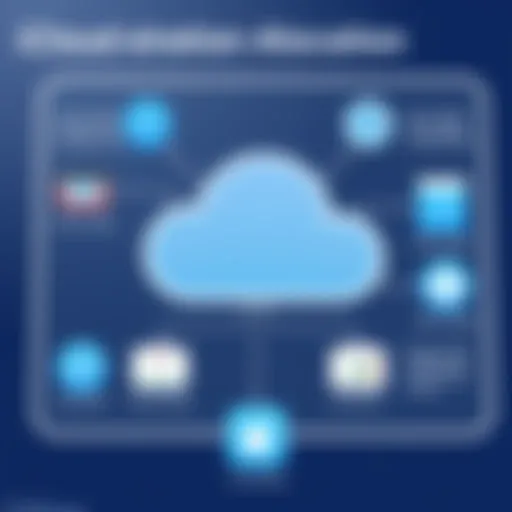Understanding iPhone Laser Measurement Technology
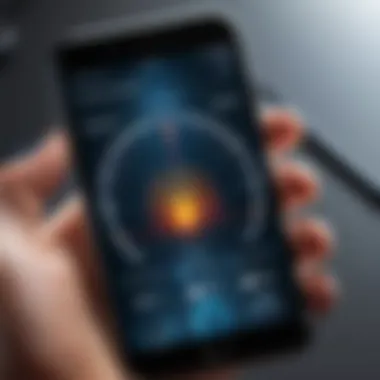
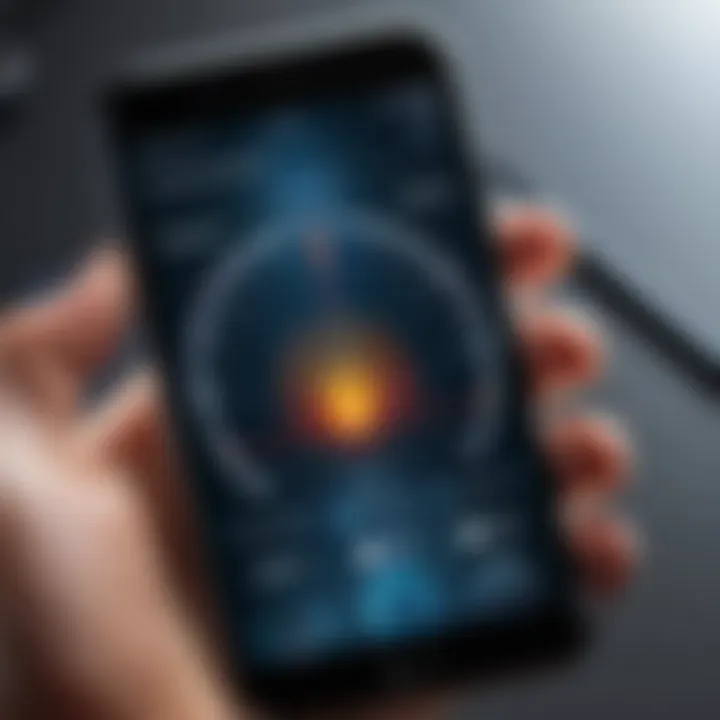
Intro
The advent of technology has transformed various facets of everyday life. One such evolution is the integration of laser measurement technology into smartphones. The iPhone, a leader in mobile innovation, utilizes this advanced measurement system to provide users with precise measurement capabilities. Understanding how iPhone's laser measurement technology works and its implications is essential for tech enthusiasts and professionals alike. It is vital to explore its functionalities and advantages. This article delves into the intricacies of this feature, aiding in appreciating its practical applications and future developments.
Key Features
Design and Build Quality
The iPhone's laser measurement technology is seamlessly integrated into its design. Apple prioritizes both aesthetics and functionality. The laser functionality is built within the device, making it compact and user-friendly. Precision is at the heart of this technology, which allows users to measure distances with remarkable ease. The build quality, typical of Apple's standards, ensures durability while housing sophisticated measurement tools.
Display and Performance
Performance significantly enhances the user experience with laser measurement technology. The iPhone's display plays a crucial role in this feature. With a large, vibrant screen, users can easily interact with measurement apps. This clarity is beneficial, especially when measuring large distances. The processing power of the iPhone ensures that measurements are taken quickly and accurately. Thus, combining a high-quality display with robust performance results in an effective measurement tool for diverse applications.
Practical Applications
Laser measurement technology on the iPhone extends beyond simple distance measurement. Here are some practical applications:
- Home Design: Interior designers utilize the technology to measure spaces accurately for furniture placement.
- Construction: Professionals in the building industry find the laser measure functionality essential for planning and material estimation.
- Event Planning: Organizers can quickly measure distances for layout design at various venues.
This versatile tool caters to various industries, making precise measurements accessible and efficient.
Advantages Over Traditional Tools
The shift from traditional measurement tools, such as tape measures, to laser measurement technology offers insightful advantages:
- Accuracy: Laser measurement provides enhanced precision, reducing human error often encountered with manual tools.
- Efficiency: Measuring with a laser is faster than using a tape measure, saving time in professional settings.
- Portability: Since the technology is integrated into the iPhone, it eliminates the need to carry multiple tools.
In many situations, these advantages lead to higher productivity and superior outcomes.
Limitations to Consider
While laser measurement technology offers significant benefits, it is not without its limitations. Factors that users need to be mindful of include:
- Environmental Interference: Bright sunlight or obstacles can affect the laser's accuracy.
- Range Constraints: While the technology is effective for many applications, there are limits to how far measurements can be accurately taken.
Users must be aware of these aspects to utilize the technology effectively.
Future Developments
The trajectory of mobile measurement technology is promising. As advancements in sensor capabilities and app development continue, the future holds the potential for enhanced features and accuracy. Integration with augmented reality (AR) could further revolutionize how users interact with their environment and take measurements.
Overall, understanding iPhone's laser measurement technology provides valuable insights into its functionality and significance in today’s digital landscape. In the following sections, we will explore further into technical specifications and compatibility with other devices.
Preamble to Laser Measurement Technology
In a world increasingly driven by precision and efficiency, laser measurement technology plays a pivotal role. This section introduces the concept of laser measurement, its significance, and how it is shaping various industries, particularly through devices like the iPhone.
Understanding laser measurement is essential as it offers accurate distance measuring capabilities that surpass traditional methods. Technologies like those found on the iPhone are pivotal because they combine advanced laser tech with the user-friendly interface of mobile devices. Users no longer need bulky equipment to obtain precise measurements; they can do so effortlessly with their smartphones.
Defining Laser Measurement
Laser measurement involves using light in the form of a laser to gauge distance, usually employing time-of-flight technology. When a laser beam is emitted towards an object and then reflects back to the source, the time taken for this round trip can be calculated to determine distance. This method is favored for its accuracy and speed compared to common measuring tools.
The application of this technology requires careful calibration and a sophisticated understanding of optics, making laser measurement a field grounded in technical sophistication. It allows for measurements that are often precise to within a millimeter, which is invaluable in fields such as architecture and engineering.
Historical Context of Measurement Tools
Measurement tools have evolved significantly over history, beginning with simple units of length like the cubit. As cultures advanced, so did the tools they utilized. The introduction of the ruler and tape measure brought a new level of accuracy. In the 20th century, the development of electronic measuring devices marked a pivotal shift, allowing for automatic readings and digital displays.
The invention of laser technology changed the landscape entirely. From military applications to construction and engineering, lasers have provided faster and more reliable ways to measure dimensions. The iPhone’s incorporation of laser measurement functions symbolizes this evolution, representing the culmination of rigorous advancements in measurement technology.
"The laser's ability to provide accurate measurements rapidly transformed industries, making it a critical tool in modern design and construction."
The transition from manual tools to laser-based systems illustrates the ongoing demand for improved precision and efficiency in measurement practices. This historical context establishes a foundation for understanding the relevance and implications of using such technology in everyday devices like the iPhone.
The iPhone as a Measurement Device
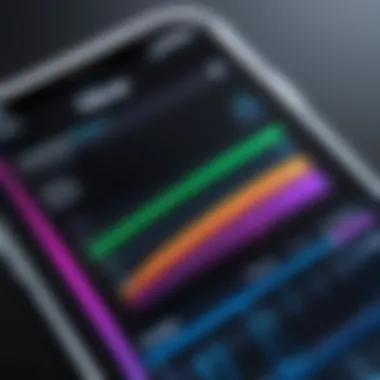
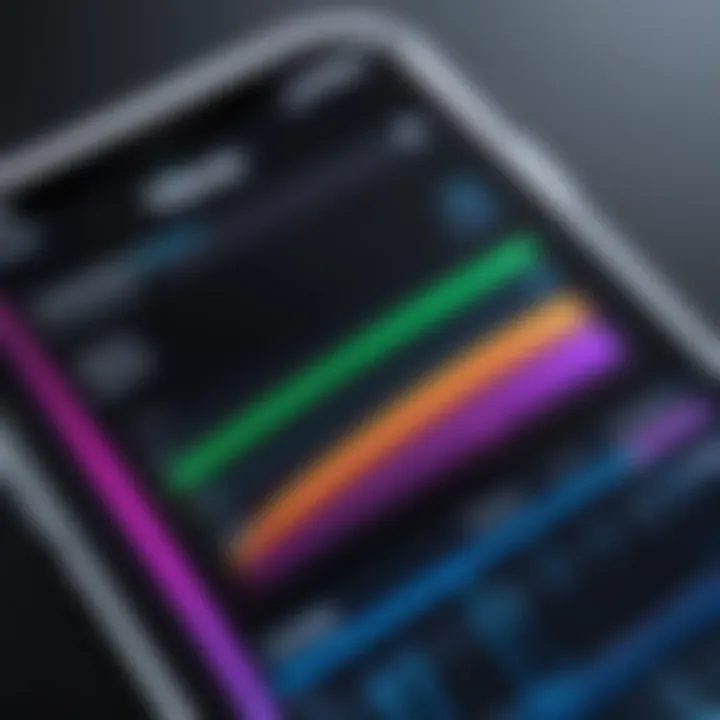
The integration of laser measurement technology within the iPhone has redefined the way users approach measurement tasks. This section focuses on the importance of considering the iPhone as a measurement device. The evolution from traditional, bulky measuring tools to sleek, multifunctional devices reflects societal shifts towards greater convenience and efficiency. By examining how the iPhone incorporates laser measurement capabilities, we can appreciate its broader implications for precision measurement across various applications.
Overview of iPhone Models with Measurement Capability
Several iPhone models have emerged with built-in laser measurement technology, highlighting the company's commitment to innovation. Starting from the iPhone 7 Plus, Apple introduced elements allowing enhanced measurement functionalities. However, the real turning point was with the iPhone 12 and subsequent models, such as the iPhone 13 and iPhone 14, which optimally integrated this technology into their hardware.
The LiDAR scanner is a standout feature in iPhone models from the 12 Pro onwards. This technology provides depth information that the standard camera cannot capture, enabling more accurate distance measurements. Users can take advantage of apps like Apple’s Measure or third-party options available on the App Store to make quick calculations of length, width, and area with ease.
Hardware Required for Laser Measurement
To effectively use laser measurement apps on the iPhone, certain hardware elements are essential. The capability is primarily harnessed through the iPhone’s LiDAR scanner and camera. The LiDAR sensor emits laser pulses to measure the distance to objects in the environment. This data is combined with the camera input to create an accurate representation of the space.
In addition to the hardware, a few software features enhance usability:
- iOS Apps: The Measure app provides straightforward functionality for measuring objects, while other specialized apps offer advanced features like area calculation.
- User Interface: A user-friendly interface ensures that even those new to technology can navigate the measurement process without extensive learning curves.
While the hardware does play a significant role, the synergy between the hardware and the software is what truly elevates the iPhone from a standard smartphone to a powerful measurement tool. This evolution marks a significant leap in mobile technology, catering to professionals in various fields including construction, real estate, and design.
How iPhone Laser Measurement Works
The functionality of laser measurement in iPhones is a crucial element discussed in this article. Understanding how this technology operates is essential for evaluating its benefits and limitations in various contexts. Laser measurement adds a layer of precision that can enhance tasks ranging from interior design to construction.
Technical Mechanisms Behind Laser Measurement
Laser measurement technology in iPhones primarily relies on a combination of hardware and software systems that work cohesively to deliver accurate results. The technology uses a laser beam that travels to an object and reflects back to the iPhone. By calculating the time it takes for the light to return, the device can determine the distance with high accuracy. The principles involved are based on the speed of light, making the measurement process not only quick but also reliable.
The use of Time of Flight (ToF) sensors is integral to this process. These sensors emit a laser pulse and measure its reflection to calculate distances. In addition, the significant advancements in computational power of newer iPhone models allow for more complex calculations and faster processing times. The result is a user-friendly interface, where users can simply point their device at an object and receive instant measurements.
An important aspect is the integration of this measurement capability within existing apps, making it accessible for various applications. The precise computational models used to convert light time data into distance measurements form the backbone of laser technology in iPhones.
Integration with Camera and Sensors
iPhones leverage their built-in cameras and sensors to enhance laser measurement functionality. The camera acts as a visual reference, allowing users to aim and align during measurement. When combined with the laser technology, users can create entirely new functionalities, such as calculating area or volume based on simple distance measurements.
This integration helps to provide contextual information. For instance, when measuring a space, a user can visually confirm that the laser is accurately directed at the desired target. Additionally, augmented reality features can overlay measurement data on real-world images, offering a tangible way to visualize dimensions.
The sensors also assist in multi-directional measurement, allowing users to measure heights or other dimensions easily. With this synergy between the camera and laser functionality, the iPhone elevates traditional measurement techniques into a modern solution that suits tech-savvy users.
Practical Applications of iPhone Laser Measurement
The practicality of iPhone laser measurement technology extends across multiple fields. The integration of laser measurement capabilities in iPhones opens new doors for precision in various contexts. This is not just about convenience, but also about the increased accuracy it offers. As technology evolves, understanding its applications is key for both users and industries.
Real Estate and Interior Design
In the realm of real estate, iPhone laser measurement is groundbreaking. Agents can measure spaces efficiently, providing potential buyers with accurate dimensions during property viewings. Interior designers benefit substantially, as the ability to measure walls, furniture, and even entire rooms with ease allows for better spatial planning.
This technology promotes a more informed decision-making process when choosing furnishings or decor. For instance, instead of carrying bulky measuring tapes, designers can simply point and click. The results are instantly available, enhancing both productivity and client satisfaction. Enhanced visualization of layouts is another notable benefit, allowing designers and clients to see potential changes before making commitments.
Construction and Renovation
Construction professionals have embraced iPhone laser measurement due to its efficiency. Accurate measurements can prevent costly mistakes. Builders can quickly assess site dimensions, which can lead to improved planning and execution. The technology is useful for everything from framing to drywall installation.
Benefits include:
- Speed: Measurements are recorded swiftly, reducing downtime on site.
- Accuracy: Precise distance readings minimize the likelihood of errors.
- Record Keeping: Digital records can be stored easily, facilitating better project management.
Renovators find this technology helpful as well. Measuring existing structures accurately ensures that new elements fit correctly. It’s practical for tasks like determining the appropriate size for new cabinets or confirming wall dimensions for artwork.
Event Planning and Layout Design
Event planners can use iPhone laser measurement to execute layouts flawlessly. Whether it’s for a wedding or a corporate gathering, knowing the dimensions of a space can dictate how tables, chairs, and stages are arranged. This is not simply about aesthetics; optimal layouts enhance functional use of the space.
In this industry, the ability to measure quickly can lead to:
- Efficiency: Fast measurements help in making real-time adjustments.
- Cost-Effectiveness: Less wastage of materials due to proper planning.
- Satisfaction: Happy customers through professional setups that meet expectations.
Using iPhone laser measurements greatly enhances logistical planning and execution in varying environments. The implications are vast, reaching from small-scale domestic projects to large commercial undertakings. As this technology advances, its adoption across different sectors is likely to increase, reinforcing its position as an indispensable tool.
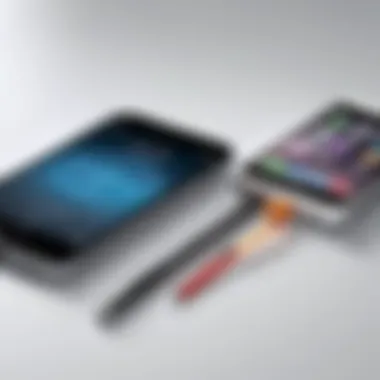
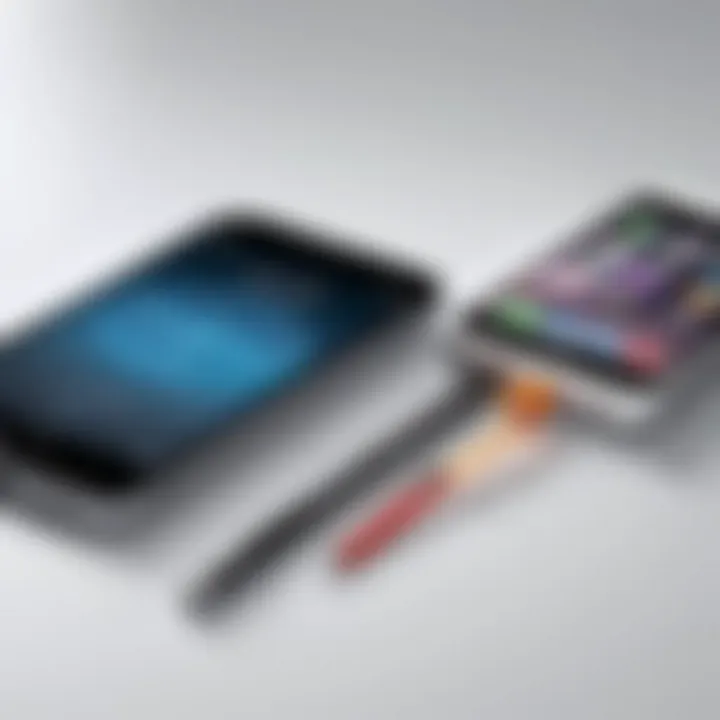
Advantages of Using iPhone for Laser Measurement
Laser measurement technology on the iPhone offers unique advantages that appeal to a broad audience, including architects, designers, and DIY enthusiasts. The benefits of using the iPhone for this purpose extend far beyond mere convenience. This section explores the two significant advantages: portability and convenience, and accuracy and precision compared to traditional methods.
Portability and Convenience
One of the primary advantages of utilizing the iPhone for laser measurement is its portability. Unlike traditional measuring tools, such as tape measures or bulky laser distance meters, the iPhone is sleek, lightweight, and readily accessible. Users can carry it in their pockets, making it easy to measure distances on-site without the need for additional tools.
The convenience factor is significant. With dedicated measurement apps, users can capture measurements quickly. They do not need to fumble with multiple devices; everything is integrated into their smartphone. This streamlining results in time savings during projects involving space calculation or layout planning.
Furthermore, the iPhone's user-friendly interface contributes to its convenience. The touchscreen allows for intuitive interactions, making it easy for users to perform measurements without extensive training or preparation. Apps can often visualize measurements with images captured by the camera, providing immediate context for data captured.
In various sectors, including real estate and construction, this blend of portability and convenience enhances workflow efficiency. Projects that once required significant equipment can now be handled with just a phone, empowering users to take measurements anytime, anywhere.
Accuracy and Precision Compared to Traditional Methods
Accuracy and precision are critical when measuring spaces, especially in professional fields. Many users might initially question how an iPhone can compete with traditional methods. However, advanced laser technology combined with the iPhone's sensors results in impressive measurement accuracy.
Laser technology fundamentally measures distances by calculating the time it takes for a laser beam to reflect off an object. iPhones utilize this technology effectively, often achieving accuracy levels up to ±1 cm. This level of precision is comparable to that of dedicated laser distance meters, a staple in many industries.
In addition, the integrated sensors in an iPhone enhance measurement capabilities. The combination of depth sensors and dual-camera systems allows the iPhone to assess distances more effectively than many manual methods. As a result, users can trust the measurements they obtain through their smartphones for precise applications, from interior designing to architectural planning.
It's also essential to recognize some limitations. Factors such as light conditions and reflective surfaces may affect accuracy. However, when conditions are correct, the precision achieved can rival that of traditional tools. Hence, for many users, the iPhone serves as a practical alternative that does not require sacrificing measurement integrity.
"The modern iPhone has transformed how measurements are taken, merging technology with everyday practicality."
By understanding the portability, convenience, and accuracy offered by the iPhone's laser measurement technology, users can appreciate its potential benefits in their work and projects. In the following sections, we will further explore the limitations and considerations related to this innovative technology.
Limitations and Considerations
Understanding the limitations and considerations surrounding iPhone laser measurement technology is crucial for users who seek reliability and performance in their measurements. While this technology provides impressive functionality, it is vital to acknowledge the obstacles that may affect its accuracy and effectiveness in specific scenarios. Exploring challenges associated with environmental factors and acceptable error margins helps users set realistic expectations and utilize the technology correctly.
Challenges with Environmental Factors
Laser measurement technology on the iPhone often encounters challenges due to environmental conditions. Light, for instance, plays a major role in the overall effectiveness of laser measurements. In bright sunlight, laser beams may not be clearly visible, making it tough for users to determine accurate distances. Additionally, reflective surfaces can cause significant discrepancies in measurements. If a measurement is taken against a shiny floor or wall, the laser might bounce off these surfaces, leading to errors.
Another factor is atmospheric conditions like rain, fog, or dust. These can scatter the laser beam, resulting in poor accuracy. Understanding these variables is important. Users should consider these conditions before relying solely on their iPhone for precise measurements.
"Environmental conditions can drastically influence laser measurement outcomes. Being aware of these factors helps ensure better accuracy."
Acceptable Error Margins
Every measurement tool, including the iPhone’s laser measurement app, has an acceptable error margin. This margin can vary based on factors such as distance and the specific technology used in the device. In most cases, measurements can deviate slightly from actual dimensions, which can be critical in professional settings such as construction or design.
Typically, the acceptable error for the iPhone’s laser measurement may range from ±1% to ±2% of the total distance measured. For example, if a user measures a distance of 10 meters, a 1% error margin means the actual distance could be anywhere between 9.9 meters and 10.1 meters. Understanding these limits is essential for users to apply the technology effectively.
Epilogue
When utilizing iPhone laser measurement technology, recognizing its limitations is paramount for effective application. Users should always be cautious about environmental factors and must be aware of the acceptable error margins. This knowledge fosters a more informed approach to measurement tasks, resulting in better outcomes.
Comparison with Traditional Measurement Tools
In examining the realm of measurement technologies, it becomes crucial to draw comparisons between iPhone's laser measurement capabilities and traditional measurement tools. This exploration serves to articulate the practical implications for users and the evolving expectations of accuracy and efficiency within measurement practices. By contextualizing these tools, one may better appreciate the specific benefits that laser measurement technology brings to the table.
Tape Measures
Tape measures have long been a staple in the toolkit of builders, designers, and everyday do-it-yourself enthusiasts. They are straightforward and easy to use, making them approachable for a wide range of users. However, their reliance on manual operation can lead to human error. The limitation primarily lies in their size, requiring physical handling and more than one person for longer distances.
Here are some key points regarding tape measures:
- Physical Limitations: The maximum length one can measure is constrained to the tape’s length and the handler's ability to maintain its tautness.
- Error Prone: Measurements are often subject to inaccuracies due to user mistakes or environmental factors such as wind or curves.
- Non-Digital: There is no automatic calculation of areas or volumes with tape measures. Calculations must be done manually, increasing potential for error.
As a comparison, the iPhone’s laser measurement applications provide a more efficient and accurate means of measuring distances. An iPhone can quickly calculate areas, convert measurements into various units, and store data digitally, effectively reducing the tendency for human errors encountered with tape measures.
Laser Distance Meters
Laser distance meters represent another traditional measurement tool but function more similarly to the iPhone’s laser measurement technology. They provide accurate measurements at a distance, utilizing laser beams to calculate the length in a more efficient manner than tape measures. However, they come with their drawbacks.
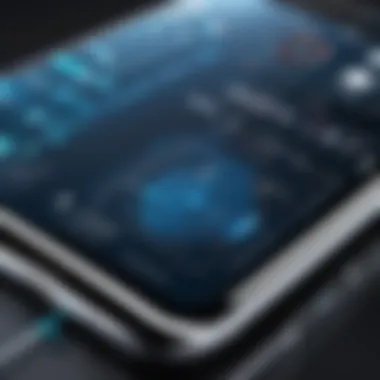
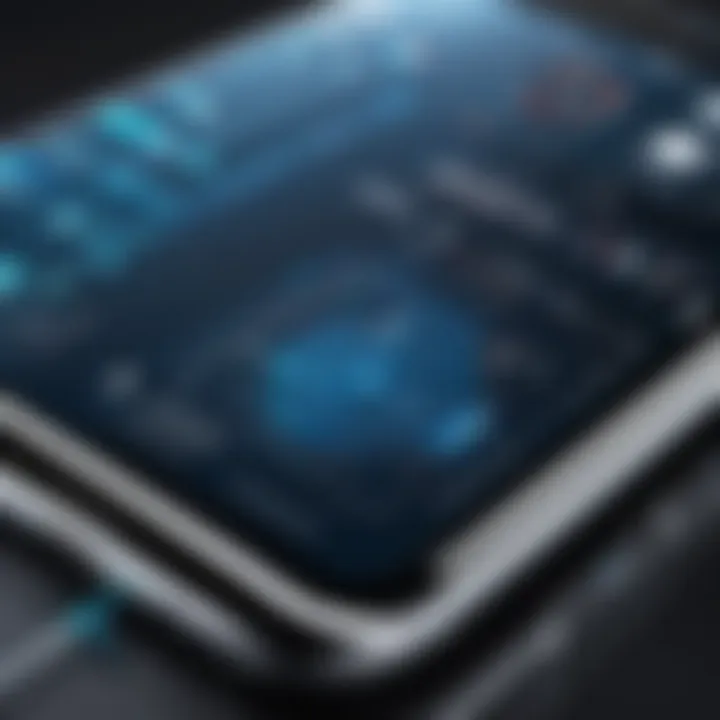
Consider these aspects of laser distance meters:
- Cost: Laser distance meters can be significantly more expensive than tape measures. Their technology appeals primarily to professionals who require precision and advanced features.
- Size and Portability: They are typically bulkier than an iPhone, making them less convenient for quick measurements.
- Limited Integration: Laser distance meters do not typically integrate with apps or provide the additional functionalities of the iPhone, such as automatic data logging or project management features.
In contrast, the iPhone integrates well within a broader ecosystem, offering measurement alongside a myriad of digital tools such as reminders and calendars, thus enhancing its usability for everyday tasks. This effectiveness underscores the advantages of adopting mobile laser measurement technology over traditional tools.
"The advent of laser measurement technology via smartphone applications has fundamentally transformed the efficiency and accuracy of measurement practices across various domains."
In summary, while traditional tools like tape measures and laser distance meters hold their respective places in measurement history, they often exhibit limitations in functionality, accuracy, and convenience when placed against the backdrop of iPhone technology. The latter's ability to seamlessly integrate measurements into digital workflows gives it a distinctive edge in both professional and casual settings.
Future of Laser Measurement on Mobile Devices
Laser measurement technology is evolving rapidly, and its future on mobile devices like iPhones promises to transform how users conceptualize and execute measurements. As users continue to seek more efficient and versatile tools, mobile devices increasingly become central in various fields, enhancing their practicality. This section delves into emerging technologies and the potential enhancements anticipated for iPhones, outlining the benefits and considerations that accompany these advancements.
Emerging Technologies
Emerging technologies in laser measurement include different approaches such as LiDAR. This technology has gained traction, especially since its integration into newer iPhone models like the iPhone 12 Pro and later versions. LiDAR, or Light Detection and Ranging, functions by emitting laser beams toward objects and calculating the time it takes for them to reflect back.
- Depth Sensing: LiDAR aids in creating detailed three-dimensional maps, which are particularly useful in architecture and design.
- AR Integration: Augmented reality applications utilize the precise depth information provided by LiDAR to enhance user interactions with the environment.
- Smartphone Compatibility: As other smartphone manufacturers start implementing similar technology, the competition will likely contribute to improved features and functionality across devices.
Potential Enhancements in iPhones
Looking ahead, several enhancements for iPhones can refine laser measurement capabilities further. Each advancement may result in more accurate and user-friendly experiences.
- Increased Accuracy: Developments in sensor technology may lead to even higher levels of precision, allowing homeowners and professionals to rely wholly on their devices for critical measurements.
- Enhanced User Interfaces: Improvements in software design can streamline the user experience. Intuitive interface elements can enable quicker navigation through measurement functionalities.
- Expanded Functionalities: New features can incorporate additional functionality such as automated area calculations and integration with other apps like project management tools.
- Longer Range Measurement: Future models may achieve longer measurement ranges, allowing greater versatility for outdoor projects and larger spaces.
The integration of advanced technology into iPhones indicates a significant shift in how laser measurement tools will be perceived and utilized.
As these technologies and enhancements are adopted, the potential for laser measurement on mobile devices indicates a promising future, allowing both casual users and professionals to innovate their approach toward measurement tasks.
User Experience and Feedback
User experience plays a crucial role in understanding how effective iPhone laser measurement technology is. This topic allows us to reflect on how users interact with the technology, what benefits they find, and any challenges they might face. Focusing on user feedback helps developers enhance the practical applications of this technology, ensuring it meets the needs of its users. The more positive the user experience, the wider the adoption of laser measurement features can be expected.
Case Studies of User Implementations
Examining specific case studies provides valuable insights into how various users have successfully implemented iPhone laser measurement technology in real-world scenarios. For instance, some architects report using the measurement capabilities of their iPhones to quickly gauge room dimensions during client meetings. They find this tool particularly useful when working in unfamiliar spaces. Similarly, interior designers often utilize the technology to measure spaces before purchasing furniture, facilitating a more efficient decision-making process.
Another example includes educators incorporating this technology into lesson plans. Teachers have found using the iPhone’s laser measurement feature helps their students understand geometric concepts more tangibly.
These case studies illustrate that the iPhone is not just a phone, but a powerful tool that enhances productivity and creativity. They highlight various positive outcomes, from saving time to providing more accurate data than traditional measures.
Common Issues and User Suggestions
Despite its benefits, users sometimes confront common issues with iPhone laser measurement technology. One frequent problem is the dependency on lighting conditions. Many users report that poor lighting affects measurement accuracy. This inconsistency can lead to frustration, especially in professional settings where precision is critical. Additionally, some users mention that the technology may struggle in environments with reflective surfaces. This can skew the results.
Many users suggest improvements to the software. For instance, enhancing the application's interface can make navigation smoother. Suggestions also include integrating features that offer guidance on optimal lighting conditions.
Moreover, regular software updates from Apple can streamline performance, address known bugs, and add new functionalities based on user feedback. The continuous feedback loop between users and developers is essential for refining the technology.
"User feedback is not just a response; it is a powerful tool for innovation."
Overall, understanding user experiences and feedback is vital to improve laser measurement technology on the iPhone. By focusing on real-world applications and addressing areas of concern, developers can create a more effective and intuitive tool for all users.
Ending
The conclusion serves as a critical pivot in examining the implications of laser measurement technology integrated within iPhones. Understanding this section is instrumental as it encapsulates the multifaceted impacts of using these advanced tools in practical scenarios. Each aspect of the discussed technology aligns with the needs of modern users who rely heavily on efficiency and precision.
Summarizing the Impact of Laser Measurement
The impact of laser measurement technology on everyday tasks is significant. Users can expect improved accuracy when taking measurements, eliminating potential errors that often accompany traditional methods. This shift from manual to digital measurement is not just about speed; it's about elevating the standards of precision. The capability of an iPhone to provide accurate distance calculations influences various fields including real estate, architecture, and interior design. Moreover, the convenience of having this technology integrated into a device that most individuals already carry means that professional-grade measurement is now more accessible than ever.
Another crucial component of this impact is the enhancement in workflow efficiency. With laser measurement applications, professionals can quickly obtain measurements, share them, and even create digital layouts or 3D models without needing to carry bulky tools. This integration of technology into daily practices reduces time spent on tasks that previously required physical measuring tools, thus maximizing productivity.
"Laser measurement technology on devices like the iPhone not only transforms how individuals think about measurement but also exemplifies a shift towards smarter solutions that save time and increase efficiency."
Looking Ahead: The Role of Integrated Technologies
The future of laser measurement technology on mobile devices looks promising. As smartphone capabilities expand, one can anticipate not just enhancements in measurement accuracy, but also greater integration with other integrated technologies. For instance, as augmented reality becomes more developed, the potential to visualize measurements within a physical space could transform how design and planning are approached.
Improvements in software algorithms and hardware capabilities will likely enable more sophisticated features. Future iPhone models may include enhanced sensors that will further increase measurement precision and potentially introduce additional functionality, such as environmental sensing. Users could benefit from features that adapt these measurements based on real-time environmental conditions, providing an even deeper analysis.
In summary, the advancements in laser measurement technology not only foster transformation in profession-based workflows but also signal a broader trend towards increasing functionality and convenience in mobile devices. As these technologies continue to evolve, users can expect even more innovative solutions that will redefine traditional measurement practices.

